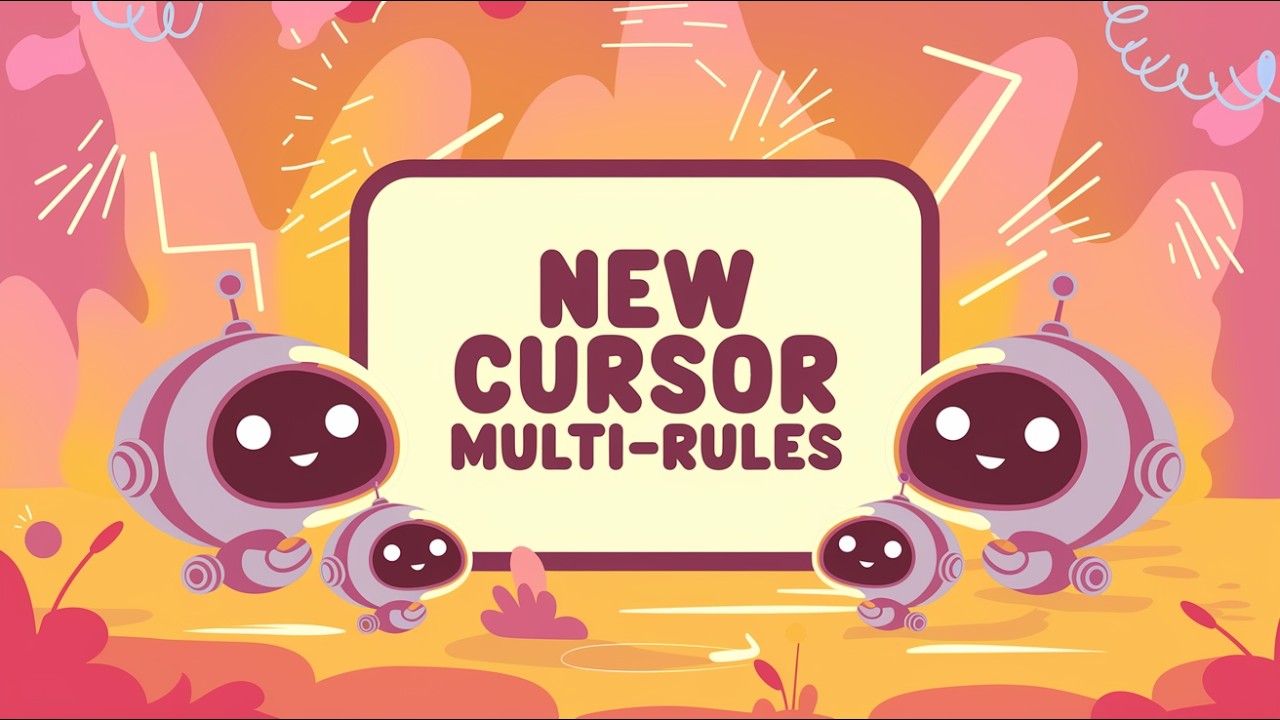The video explains the new multi-file rules feature in Cursor, which allows users to create general and project-specific rules for better AI integration with their codebases. It emphasizes the importance of clear descriptions for rules and encourages experimentation to improve the AI’s adherence to these rules, while also noting potential issues with automatic recognition.
The video discusses the new multi-file rules feature in Cursor, which replaces the older cursor rules file that is being deprecated. The presenter explains that the new rules can be found under the settings menu, specifically in the rules section. User rules, previously used for general instructions applicable to all projects, are now separated into general rules and project-specific rules. General rules apply universally across all requests, while project rules are tailored to specific codebases and conventions, allowing for better integration with the AI’s understanding of the user’s projects.
To create a new rule, the presenter demonstrates the process of naming the rule and emphasizes the importance of the description. The description helps the AI decide whether to apply the rule to a request. The presenter also highlights the option to make a rule global, which means it will be considered for every request made to Cursor. This is done by clicking on a global icon, effectively transforming the rule into a general rule that applies universally.
The video illustrates the functionality of auto-attachment based on file extensions. The presenter attempts to create a rule that would automatically apply to text files, but encounters issues with the AI not recognizing the rule as intended. This leads to a discussion about the importance of clear descriptions and the potential for bugs in the system. The presenter notes that the AI may not always pick up on rules unless they are explicitly referenced or if the description is sufficiently clear.
As the presenter continues to experiment with different rules, they create an “Emoji rule” intended to prepend a smiley face to text file outputs. However, the AI fails to apply this rule consistently, prompting further exploration of how the rules interact with the AI’s decision-making process. The presenter emphasizes that while the rules are designed to be automatically recognized, there may be instances where the AI does not adhere to them, indicating a need for refinement in the system.
In conclusion, the video provides a comprehensive overview of the new multi-file rules in Cursor, detailing how to create and manage these rules effectively. The presenter encourages users to experiment with different descriptions and rule configurations to achieve the desired outcomes. The discussion highlights the evolving nature of the feature and the importance of user feedback in improving the AI’s performance in applying these rules. Overall, the video serves as a guide for users looking to leverage the new rules functionality in Cursor for better project management and AI interaction.
